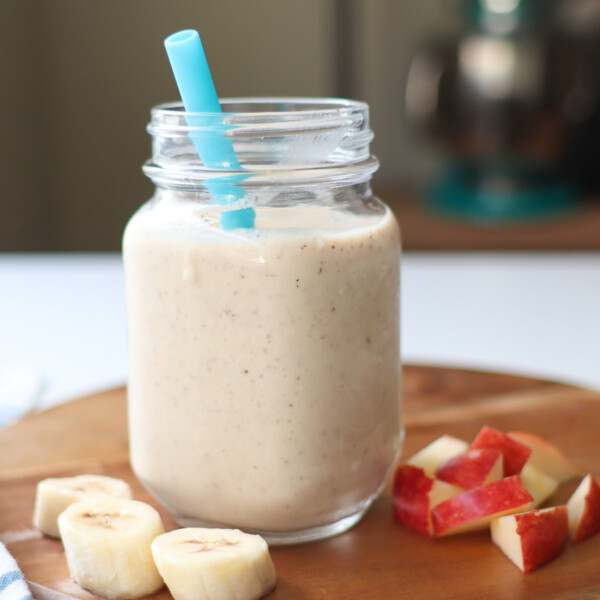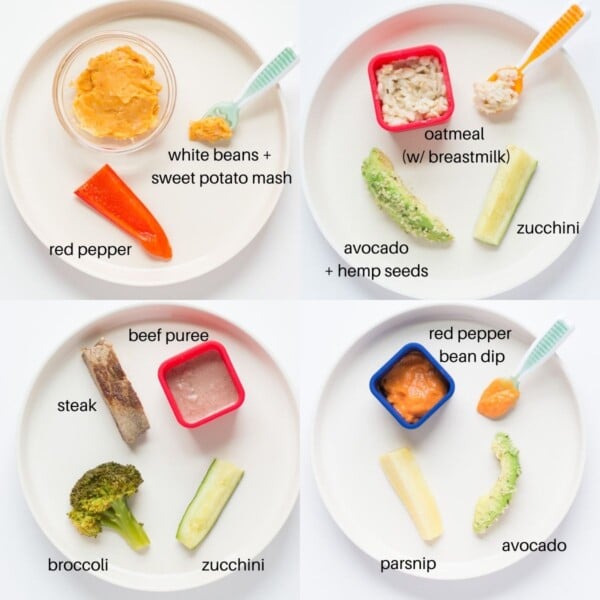This post may contain affiliate links. Please see our disclosure policy for more details.
Learn how to safely prepare and serve apple to babies as early as 6 months! You can puree or offer as a finger food for baby led weaning.
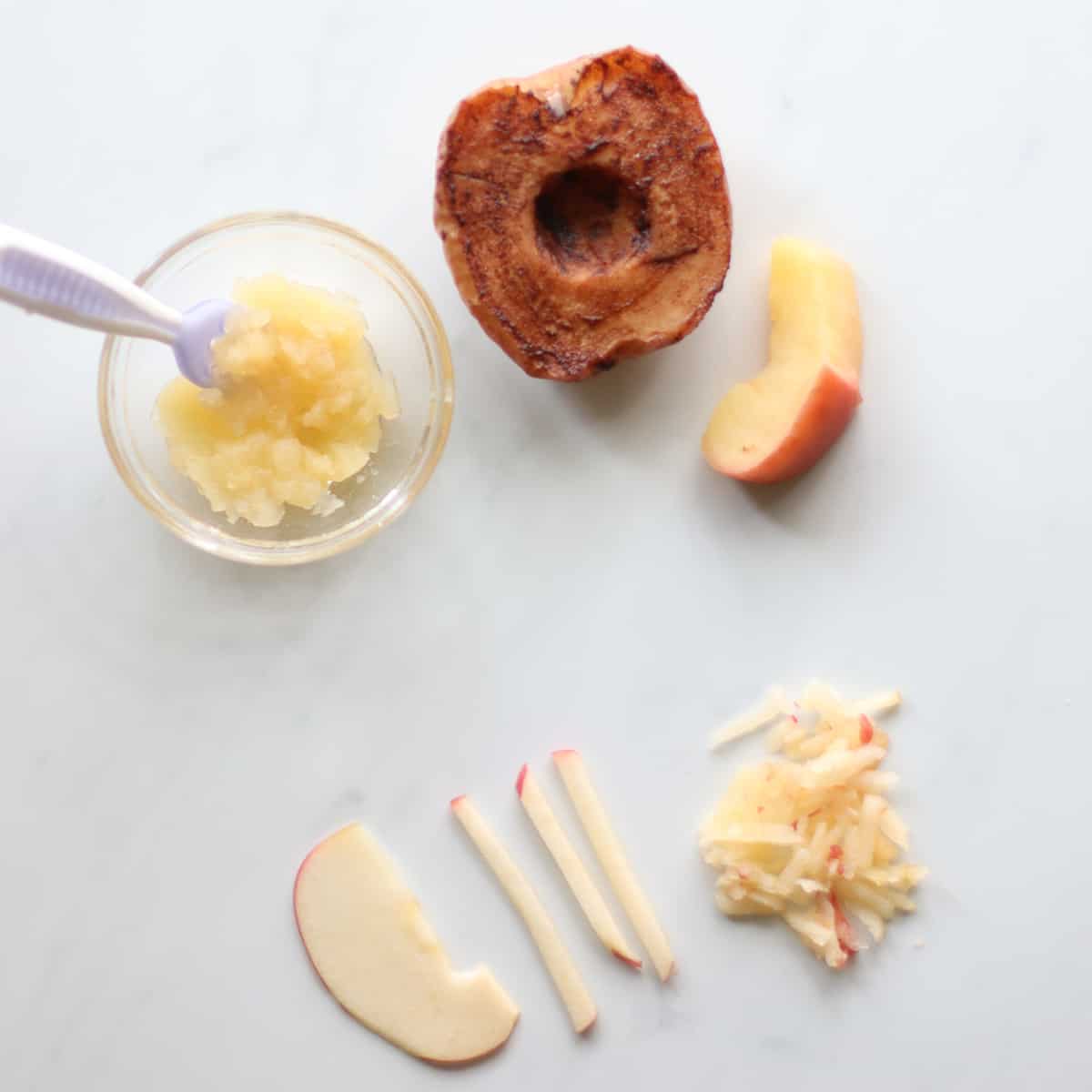
Table of Contents
When Can Babies Eat Apples?
Apples can be introduced to babies as soon as they’re ready to start solids, usually around 6 months. It’s important to remember that your baby is unique and that rather than going by the calendar, you need to make sure your baby is DEVELOPMENTALLY ready to start solids.
If you’re unsure, be sure to grab this FREE handout!
Health Benefits
Apples are an excellent source of both soluble and insoluble fiber, which play a critical role in improving gut health and help prevent constipation.
They also provide vitamin C, which is important for optimal eye, skin, and immune health. It can also greatly enhance the absorption of plant-based iron.
They also contain antioxidants, such as quercetin, catechin, and anthocyanin, that have been shown to decrease the risk of chronic diseases, such as cardiovascular disease, cancer, and asthma.
Are Apples Safe for Babies?
While apples can be introduced as one of your baby’s first foods, it’s extremely important to make sure they’re prepared and served in an age-appropriate way to minimize the risk of choking.
Let me show you how! Apple allergy is pretty rare too.
Selecting the Best Apples
Choose apples that are firm with no nicks or bruises. They should be full colored rather than dull as this is a great indicator that the apples have absorbed plenty of sunlight, resulting in the best flavor.
And just like with peaches and mangoes, give them a sniff! They should have a pleasant aroma.
How to Cook Apples for Baby
The good news is it’s super easy to cook apples so that they are flavorful and safe for your baby.The good news is it’s super easy to cook apples so that they are flavorful and safe for your baby.
Apple Puree
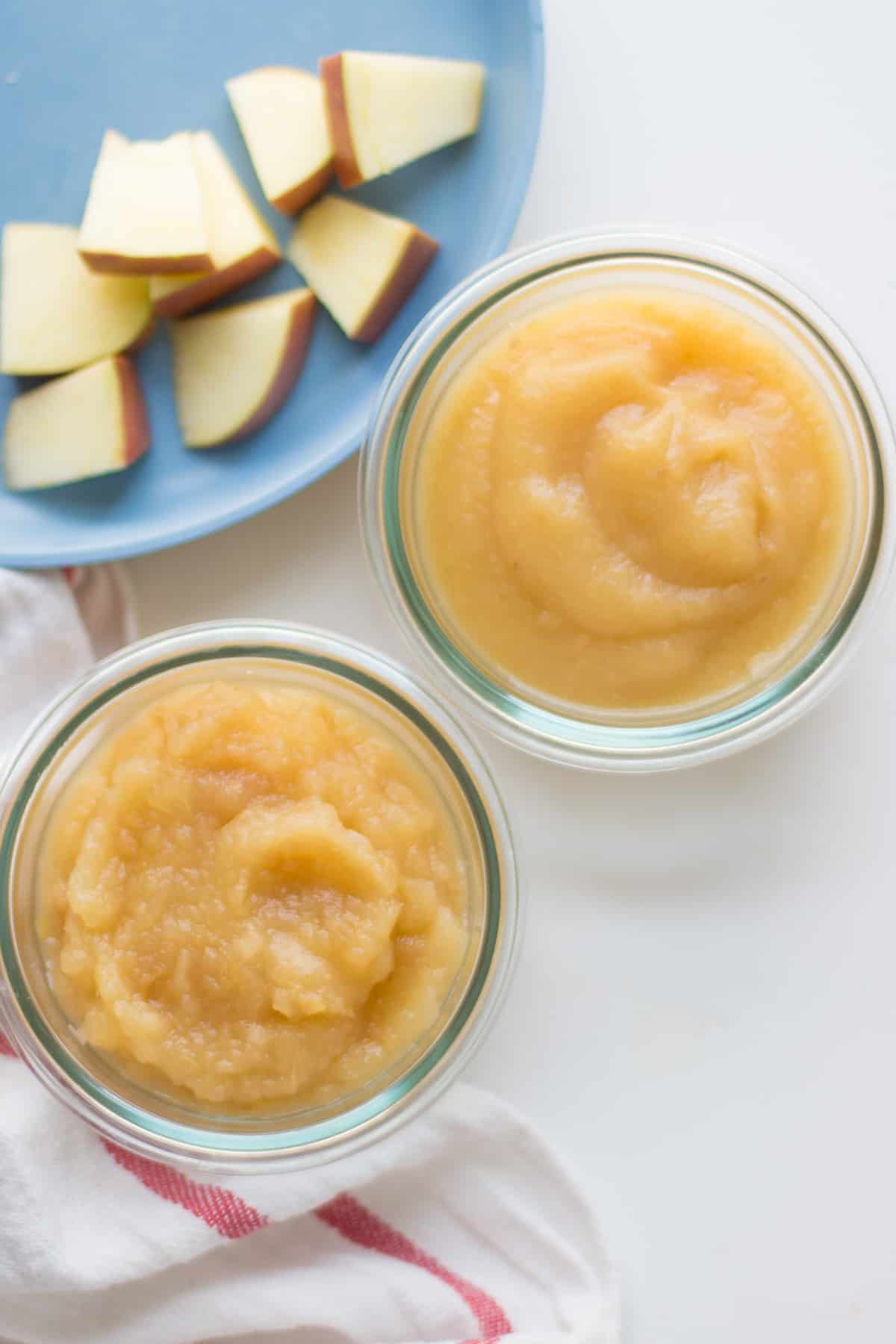
Apple puree is basically the same thing as applesauce. All you have to do is cook the apples (by stewing, steaming, or baking) and blend.
How to make homemade unsweetened applesauce
Steamed
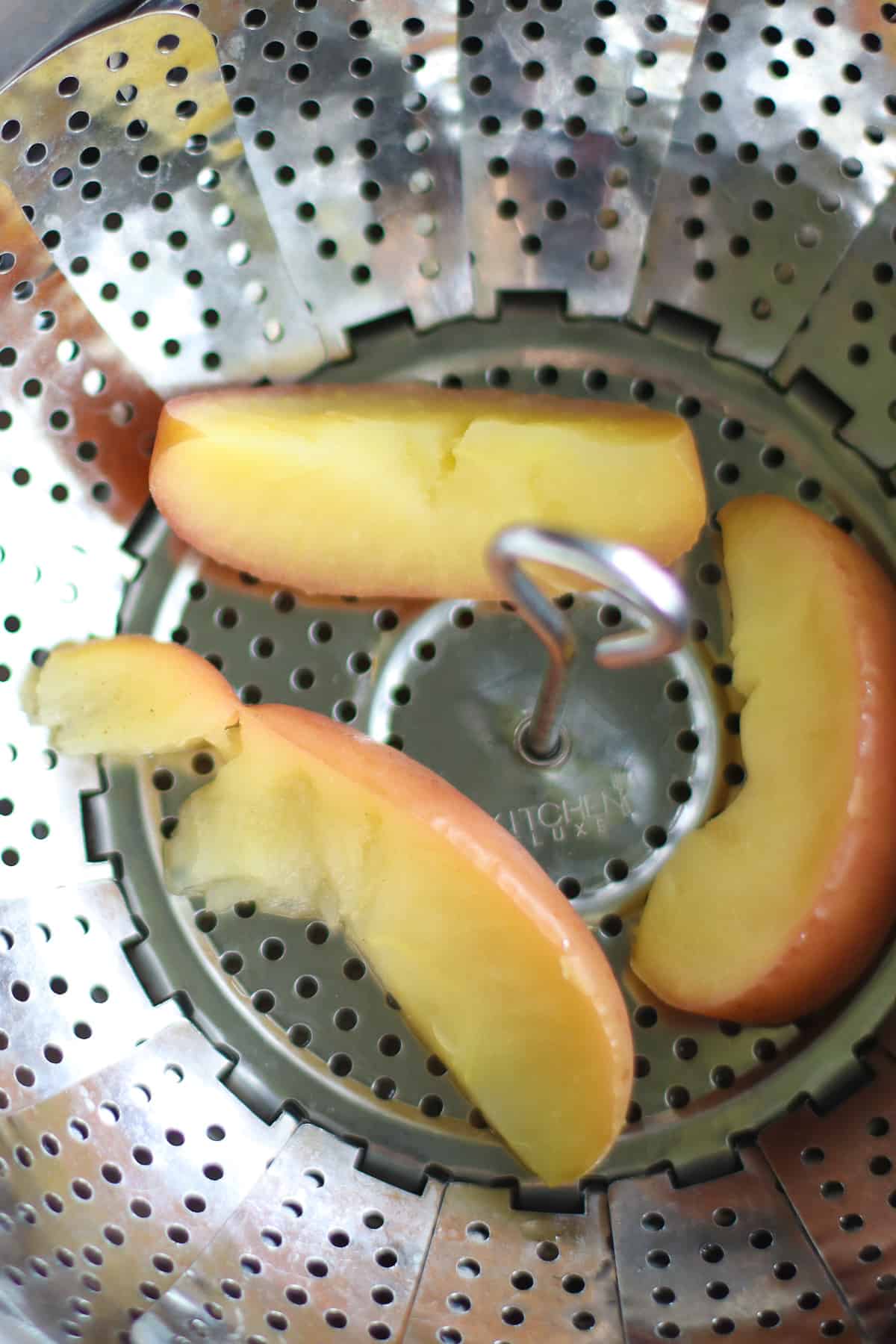
Slice cored apples into large wedges with or without skin. Once cooked, you can cut into smaller pieces depending on your baby’s age. This way you can serve both big and small pieces as suggested below.
Place water in a pot, add steamer basket, and bring to a boil. Add apples, cover, reduce heat to medium, and cook for 20-25 minutes. It should be easily pierce-able with a fork.
Baked
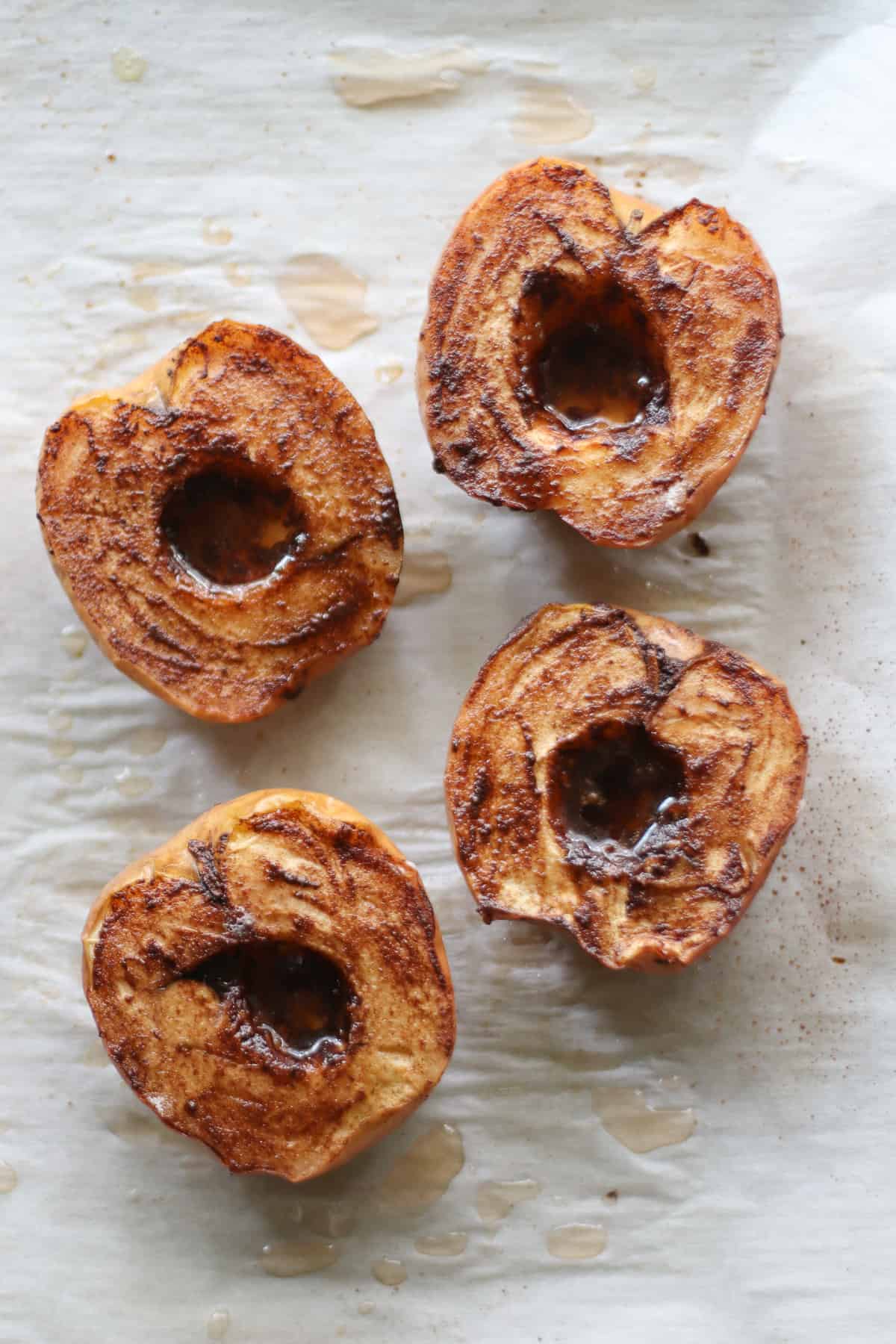
This is my personal favorite – soft and caramelized warm spiced apples..yum-O!
I have to fight over them with my kids. Although somehow I always end up losing. Imagine that ;).
All you have to do is cut the apple in half, rub with butter (or oil) and cinnamon, and bake!
How to Serve Apples to Babies
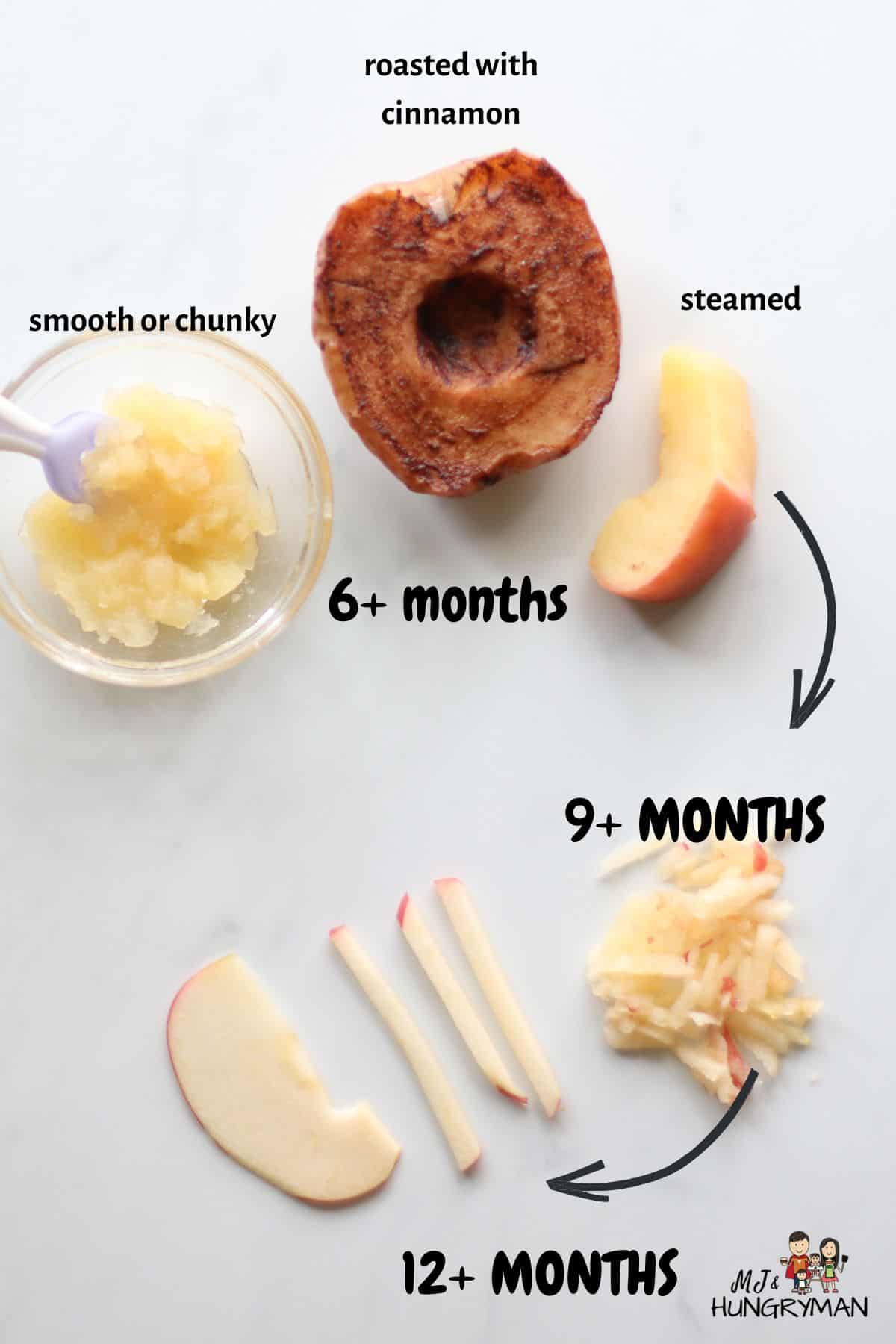
6+ months
Apple Puree/ Applesauce:
You can start with the smooth texture and move to the chunky texture by 9 months at the latest.
Mashed:
simply mash your cooked apples with the back of a fork and serve as is or add to:
Finger food:
I know it sounds counterintuitive but bigger is better and safer at this age. Their strong gag reflex will push out any large pieces that can’t be swallowed whole.
Therefore stick to large wedges or even halved cooked apples. They should easily smoosh between your thumb and forefinger.
I recommend leaving the skin on as it will help with the grip. Your baby will be able to mash the flesh with their powerful gums and most likely spit out the skin.
But if you feel nervous, you can remove the skin and coat with ground nuts and seeds, shredded coconut, almond flour, etc. to make it easier to grab.
Pro tip: cook with the peel on and leave on half of the apple wedge to create an easy-to-hold handle for your baby (refer to the picture above).
9+ months
As your baby develops their pincer grasp and is able to pick up small pieces of food using their thumb and finger, you can offer raw grated apples.
12+ Months
Depending on your child’s chewing ability and your comfort level, start offering thin raw slices or matchsticks.
Generally speaking, around 2 is when it is best to offer a whole apple.
If you want to learn how to prepare other specific food(s), check out my How To Series!
Frequently Asked Questions
Juice of any kind, even if it’s 100% fruit, should be avoided until 12 months of age. Even then it’s recommended to give very sparingly. The reason being, regular consumption of juice can displace important nutrients and increase the risk of obesity, tooth decay or cause diarrhea.
Instead of juice, focus on offering a wide variety of whole fruits and vegetables.
Apples are on the top list of fruits with highest pesticide residues so it’s best to purchase organic, if possible. However, don’t let this prevent you from enjoying this delicious fruit with your baby!
The healthy benefits of eating fruits and vegetables outweigh the potential pesticide risk!
Here are some things you can do to minimize exposure:
You can soak the apples in baking soda for 12-15 minutes, which can help remove 80-95 percent of two common pesticides, thiabendazole and phosmet (source).
Peel the skin off of conventional apples if that helps put your mind most at ease. What I always encourage is to not get fixated on any one food but focus on serving a wide variety of foods to help meet your baby’s nutritional needs.
While it’s tempting to always gravitate towards sweet varieties as they’re easily accepted by many babies, I highly encourage you to not shy away from those that are tart, like Granny Smith, McIntosh, and Braeburn.
The more they become familiar with all the different flavors and textures, the more likely they are to learn to enjoy them.
Apple Recipes for Babies
Did you make this recipe? Leave a rating below and let me know how you liked the recipe! Your feedback means so much to me!

Apples for Babies
Ingredients
- 1 apple
- 1 tablespoon butter or oil (for baking), see note
- 1 teaspoon cinnamon (optional)
Instructions
- Core the apple and slice into large wedges with or without skin.
- Place water in a pot, add steamer basket, and bring to a boil. Add apples, cover, reduce heat to medium, and cook for 20-25 minutes. It should be easily pierce-able with a fork.





